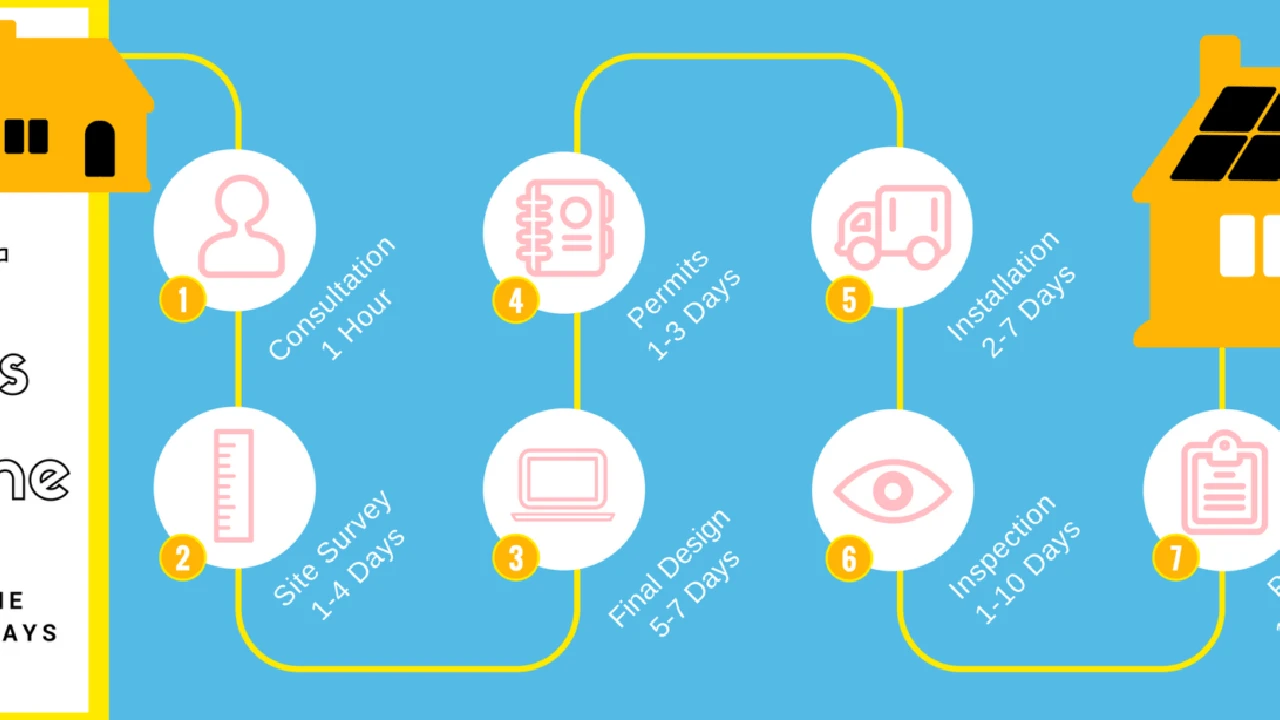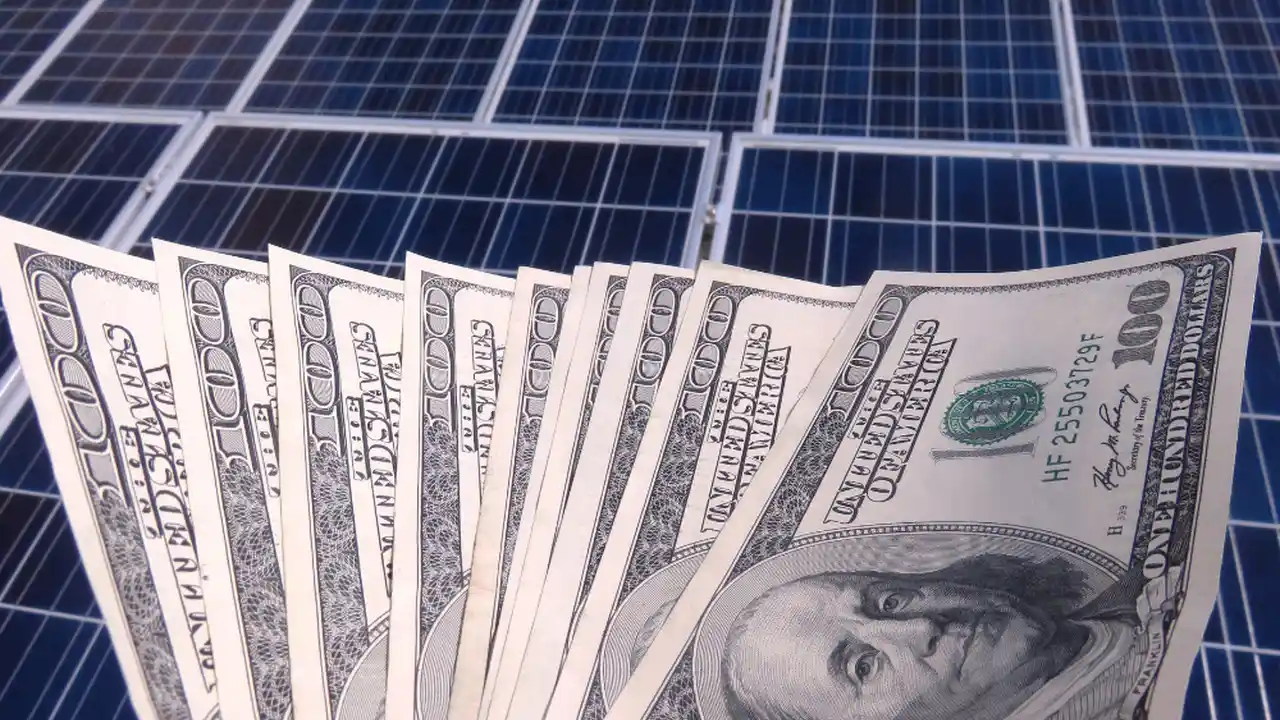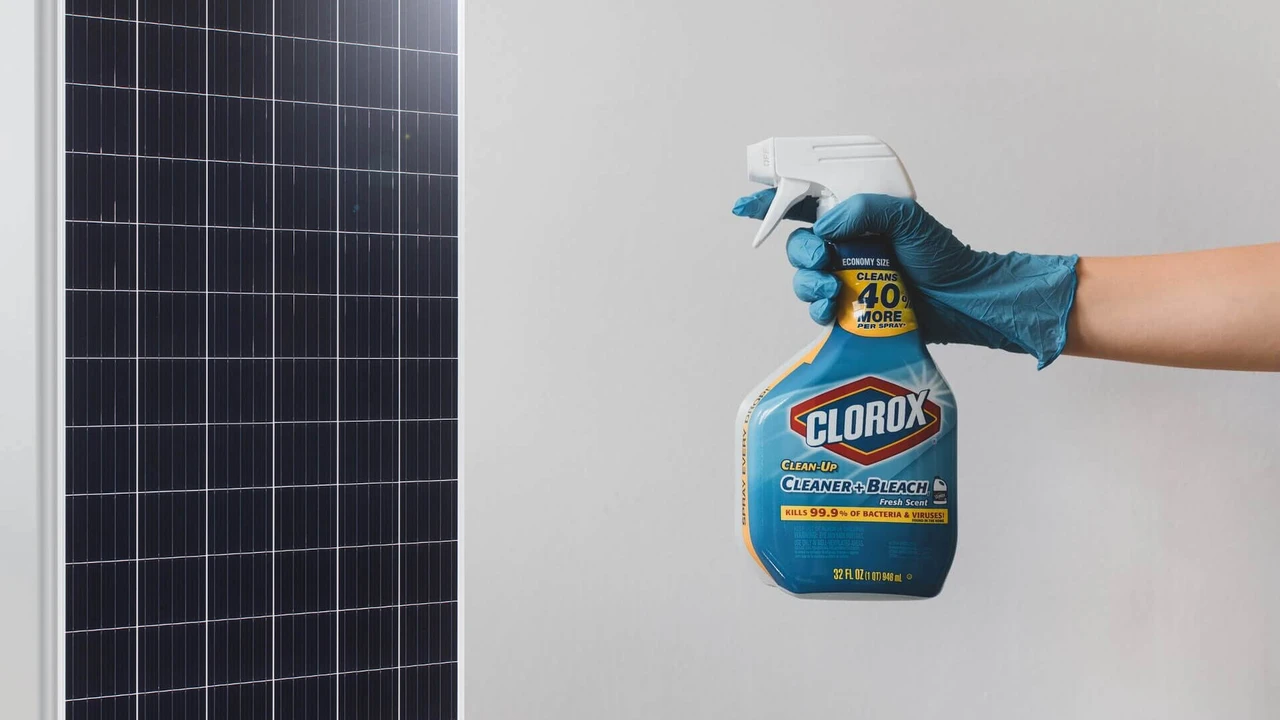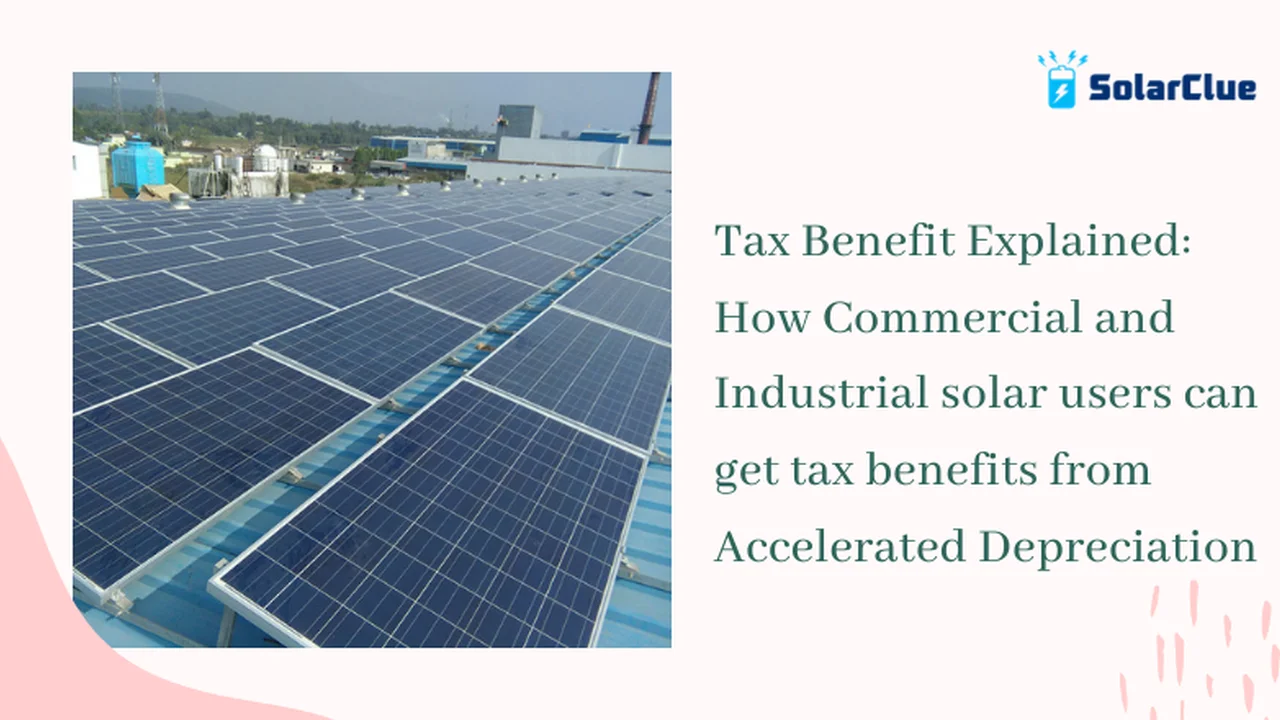Solar Panel and Energy Savings: How Much Can You Save?

Understanding Solar Panel Savings Potential in Your Home
Hey there, future solar enthusiast! So, you're thinking about ditching the grid and soaking up the sun's free energy? Smart move! But let's get real, the big question is: how much can you actually *save* with solar panels? It's not just about feeling good about going green (though that's a HUGE bonus!), it's about the cold, hard cash. We're going to break down the savings, the costs, and everything in between, so you can make an informed decision and maybe even splurge on that vacation you've been dreaming of with all the money you save.
Calculating Your Potential Solar Savings: A Deep Dive into Energy Consumption
First things first, let's talk numbers. To figure out how much solar can save you, we need to know how much energy you're using now. Dig out your electricity bills from the past year. See those kilowatt-hour (kWh) numbers? Add them all up and divide by 12. That's your average monthly energy consumption. Got it? Great! Now, things get a little more complex.
Your savings depend on a bunch of factors, like:
- Your Location: Sunny California is going to generate way more solar energy than cloudy Seattle.
- Your Roof: Is it south-facing? Shaded by trees? The angle and direction of your roof matter.
- The Size of Your System: A bigger system generates more power, but also costs more.
- Net Metering Policies: Does your utility company pay you for the excess energy you send back to the grid? (Fingers crossed!)
- Solar Incentives and Rebates: The government and your state might offer tax credits or rebates that can significantly reduce the cost of your system.
- Your Electricity Rates: The higher your current electricity rates, the more you'll save by switching to solar.
Don't worry, you don't have to do all this math yourself! There are plenty of online solar calculators that can give you a good estimate. Just plug in your location, energy consumption, and roof details, and they'll spit out a savings projection. Many solar installers also offer free consultations and can provide a personalized quote.
Exploring Different Solar Panel Types and Technologies for Optimal Energy Savings
Alright, let's get technical for a sec. There are a few different types of solar panels out there, and they all have their pros and cons. Knowing the difference can help you choose the right panels for your needs and maximize your savings.
- Monocrystalline Panels: These are the top dogs of the solar world. They're made from a single crystal of silicon, making them super efficient and long-lasting. They're also the most expensive. If you want the best of the best and have the budget, go with monocrystalline.
- Polycrystalline Panels: These panels are made from multiple silicon crystals, which makes them a bit less efficient than monocrystalline panels, but also more affordable. They're a great option for those on a budget who still want good performance.
- Thin-Film Panels: These are the budget-friendly option. They're made by depositing a thin layer of photovoltaic material onto a substrate. They're less efficient than crystalline panels, but they're also flexible and lightweight, making them suitable for curved surfaces or roofs that can't support the weight of traditional panels.
Beyond the type of silicon, other technologies contribute to panel efficiency. Passivated Emitter and Rear Cell (PERC) technology is common. Bifacial panels, which generate power from both sides, are another growing option.
Solar Panel Installation Costs and Long-Term Energy Savings: A Financial Perspective
Okay, let's talk money. Solar panels aren't cheap. The average cost of a residential solar panel system in the US ranges from $15,000 to $25,000 before incentives. That's a hefty chunk of change, but remember, it's an investment that will pay off in the long run.
Here's how the math works:
- Upfront Cost: This includes the cost of the panels, inverters, racking, installation, and permits.
- Solar Incentives and Rebates: Take advantage of the federal tax credit (currently 30% of the system cost) and any state or local incentives. This will significantly reduce your upfront cost.
- Annual Energy Savings: This is the amount of money you'll save on your electricity bill each year.
- Payback Period: This is the time it takes for your cumulative energy savings to equal the upfront cost of the system. The average payback period for solar panels is around 7-12 years.
- Long-Term Savings: Solar panels typically last for 25-30 years. After the payback period, you'll be enjoying free electricity for the rest of the system's lifespan!
It's also crucial to consider the time value of money. Investing in solar now means you're shielded from future electricity rate increases. Think of it as pre-paying for your electricity at a fixed rate for the next 25+ years. That's a pretty sweet deal!
Maximizing Your Solar Panel Investment: Maintenance, Monitoring, and Energy Efficiency Tips
So, you've got your solar panels installed and you're basking in the glow of free energy. Awesome! But don't just sit back and relax. There are a few things you can do to maximize your savings and keep your system running smoothly.
- Monitoring: Most solar panel systems come with monitoring software that allows you to track your energy production in real-time. Keep an eye on your system's performance and make sure everything is working as it should.
- Maintenance: Solar panels are pretty low-maintenance, but they do need to be cleaned occasionally. Dust, dirt, and bird droppings can reduce their efficiency. You can either clean them yourself with a hose and a soft brush, or hire a professional cleaning service.
- Energy Efficiency: The less energy you use, the more you'll save with solar panels. Make sure you're using energy-efficient appliances, switching to LED lighting, and sealing any drafts in your home.
- Consider Battery Storage: Adding a battery to your solar panel system allows you to store excess energy and use it when the sun isn't shining. This can further reduce your reliance on the grid and increase your savings.
Comparing Popular Solar Panel Brands and Models: Performance, Price, and Warranty Considerations
Choosing the right solar panel brand can be overwhelming. Here are a few popular options, along with their key features and price points:
- SunPower: Known for their high efficiency and durability. Their Maxeon panels are among the most efficient on the market. Expect to pay a premium price.
- LG: Another top-tier brand with excellent performance and a solid warranty. Their NeON panels are a popular choice. Price is on the higher end.
- Panasonic: Offers a good balance of performance, price, and warranty. Their EverVolt panels are a reliable option. Mid-range pricing.
- REC Group: A reputable brand with a focus on sustainability. Their Alpha Series panels offer good performance at a competitive price. Mid-range pricing.
- Canadian Solar: A more budget-friendly option that still offers decent performance. Their panels are a good choice for those looking to save money. Lower-end pricing.
When comparing panels, pay attention to the following factors:
- Efficiency: The higher the efficiency, the more energy the panel will generate per square foot.
- Temperature Coefficient: This measures how much the panel's performance degrades in hot weather. A lower temperature coefficient is better.
- Warranty: Look for a warranty that covers both the panel's performance and defects. A 25-year performance warranty is standard.
- Price: Consider your budget and choose panels that offer the best value for your money.
Real-World Solar Panel Case Studies: Documented Energy Savings and ROI Examples
Let's look at some real-world examples. These are based on averages, but give you a sense of what's possible.
Case Study 1: California Homeowner
Location: San Diego, CA
System Size: 6kW
Annual Energy Consumption: 8,000 kWh
Annual Savings: $1,800
Payback Period: 8 years (after federal tax credit)
Case Study 2: Arizona Business Owner
Location: Phoenix, AZ
System Size: 20kW
Annual Energy Consumption: 30,000 kWh
Annual Savings: $6,000
Payback Period: 7 years (after federal tax credit)
These are just examples, and your actual savings will vary depending on your specific circumstances. But they demonstrate the potential for significant cost savings with solar panels.
Integrating Solar Panels with Smart Home Technology for Enhanced Energy Management
Want to take your solar savings to the next level? Consider integrating your solar panel system with smart home technology. This allows you to monitor your energy consumption, control your appliances remotely, and optimize your energy usage to maximize your savings.
Here are a few ways to integrate solar with smart home technology:
- Smart Thermostats: Programmable thermostats can automatically adjust the temperature based on your schedule, saving you energy when you're not home.
- Smart Plugs: These allow you to control your appliances remotely and turn them off when they're not in use.
- Energy Monitoring Systems: These systems track your energy consumption in real-time and provide insights into how you can save energy.
- Battery Management Systems: These systems optimize the charging and discharging of your battery to maximize its lifespan and efficiency.
By integrating solar with smart home technology, you can create a truly energy-efficient home that saves you money and reduces your carbon footprint.
Navigating Solar Panel Financing Options and Incentives: Loans, Leases, and Power Purchase Agreements (PPAs)
So, you're ready to go solar, but you're not sure how to pay for it? Don't worry, there are plenty of financing options available.
- Cash Purchase: This is the simplest option. You pay for the system upfront and own it outright. This gives you the most control over your system and maximizes your long-term savings.
- Solar Loan: You borrow money from a bank or credit union to pay for the system. You own the system and are responsible for its maintenance. This allows you to spread out the cost of the system over time.
- Solar Lease: You lease the system from a solar company. You don't own the system and are not responsible for its maintenance. You pay a monthly fee to the solar company for the use of the system.
- Power Purchase Agreement (PPA): Similar to a lease, but you only pay for the electricity that the system generates. You don't own the system and are not responsible for its maintenance.
Each option has its pros and cons. A cash purchase will maximize your savings, but requires a large upfront investment. Loans allow you to own the system without a huge upfront cost, but you'll pay interest. Leases and PPAs require no upfront investment, but you won't own the system and your long-term savings may be lower.
Don't forget to explore all available incentives, including the federal tax credit and any state or local rebates. These can significantly reduce the cost of your system.
Future Trends in Solar Panel Technology and Energy Storage: What to Expect in the Coming Years
The solar industry is constantly evolving, with new technologies and innovations emerging all the time. Here's a sneak peek at what the future holds for solar panels and energy storage:
- Higher Efficiency Panels: Expect to see even more efficient solar panels in the coming years, allowing you to generate more power from a smaller area.
- Lower Costs: Solar panel costs are expected to continue to decline, making solar power even more affordable.
- Improved Energy Storage: Battery technology is rapidly improving, with longer lifespans, higher energy densities, and lower costs. This will make it easier to store excess solar energy and use it when you need it.
- Smart Grids: Smart grids will allow for more efficient distribution of solar energy, making it easier to integrate solar power into the grid.
- Perovskite Solar Cells: Perovskite solar cells are a promising new technology that could potentially be even more efficient and affordable than traditional silicon solar cells.
The future of solar is bright! With continued innovation and decreasing costs, solar power is poised to become an even more important part of our energy mix.
Specific Solar Panel Product Recommendations and Comparisons
Okay, let's get down to brass tacks and look at some specific products:
SunPower Maxeon 6 AC: This is the gold standard. Integrated microinverters mean easier installation and panel-level monitoring. Super high efficiency (up to 22.8%) means more power from a smaller space. Expect to pay around $3.50-$4.50 per watt.
LG NeON H: A great all-around choice. High efficiency (around 22%), good temperature coefficient, and a strong warranty. Expect to pay around $3.00-$4.00 per watt.
REC Alpha Pure Series: Solid performance at a competitive price. Lead-free design is a bonus for environmentally conscious consumers. Expect to pay around $2.75-$3.50 per watt.
Q CELLS Q.PEAK DUO G11: A good budget option. Still offers decent efficiency (around 21%) and a reliable warranty. Expect to pay around $2.50-$3.25 per watt.
When comparing, consider the following:
- Wattage: Higher wattage means more power per panel.
- Efficiency: Higher efficiency means more power per square foot.
- Temperature Coefficient: Lower is better.
- Warranty: Look for a 25-year performance warranty.
- Price: Factor in the cost of the panels, inverters, racking, and installation.
Ultimately, the best solar panel for you will depend on your specific needs and budget. Talk to a qualified solar installer to get a personalized recommendation.
:max_bytes(150000):strip_icc()/277019-baked-pork-chops-with-cream-of-mushroom-soup-DDMFS-beauty-4x3-BG-7505-5762b731cf30447d9cbbbbbf387beafa.jpg)






